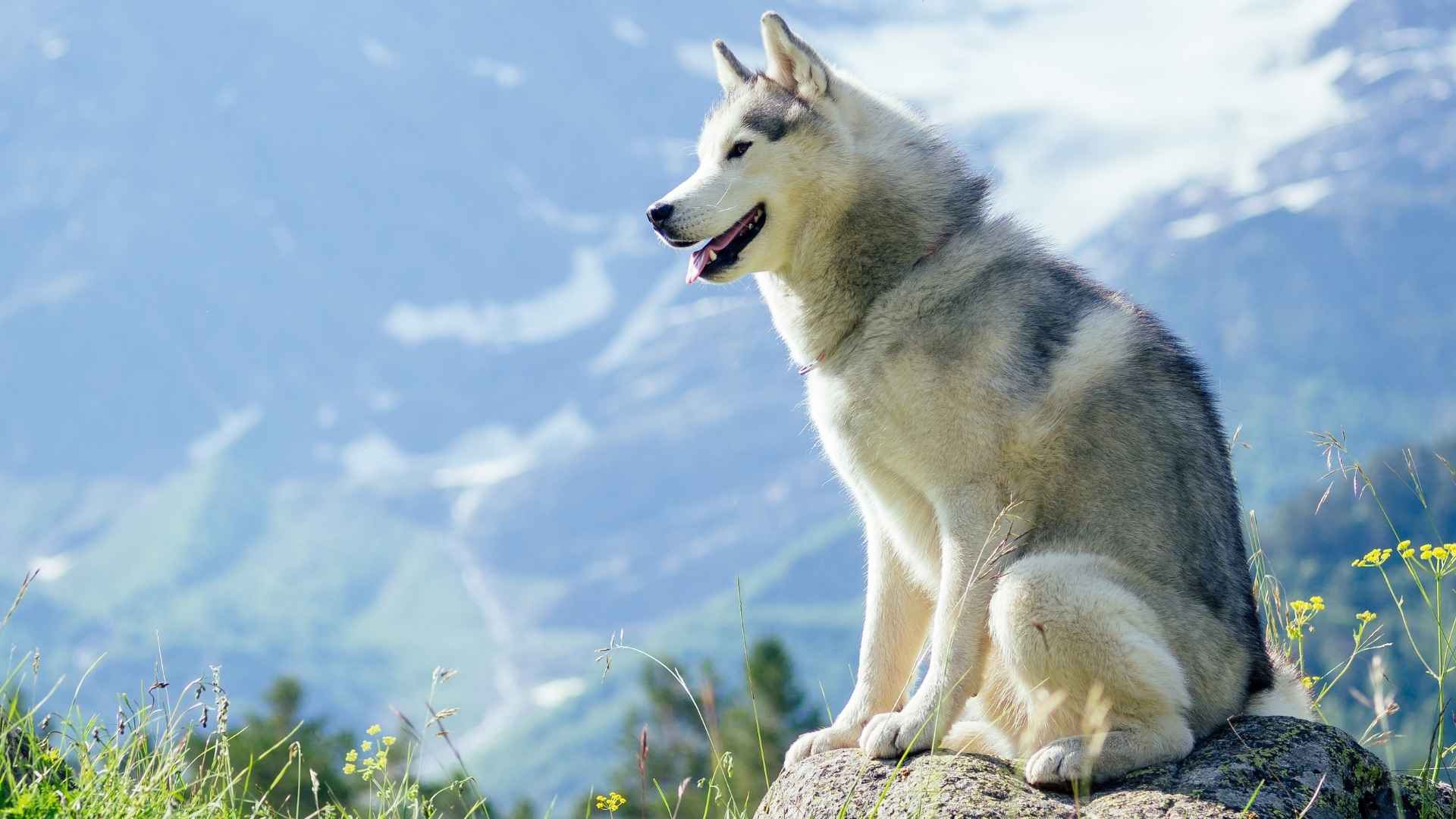National parks offer a world of natural wonder, not just for people, but for dogs too. Whether it’s the scent of pine needles, the rustle of wildlife, or the thrill of an open trail, these wide-open spaces provide physical exercise and mental stimulation dogs crave. But while most pups love a good romp outdoors, some breeds are truly in their element when immersed in nature’s grandeur.
Not all dogs are built the same when it comes to outdoor endurance. Some are content with a stroll around the block, while others thrive on extended hikes, chilly weather, and rugged terrain. For active pet parents who enjoy backpacking, trekking, or spending weekends in the wild, choosing the right canine partner can make all the difference. The key is to find a dog whose energy, instincts, and resilience match your outdoor lifestyle.
If national parks are your second home, consider bringing along a four-legged companion who will love them just as much. Here’s our list of dog breeds that are best suited to flourish in these stunning natural playgrounds.
Dog Breeds That Thrive In National Parks
1. German Shepherd
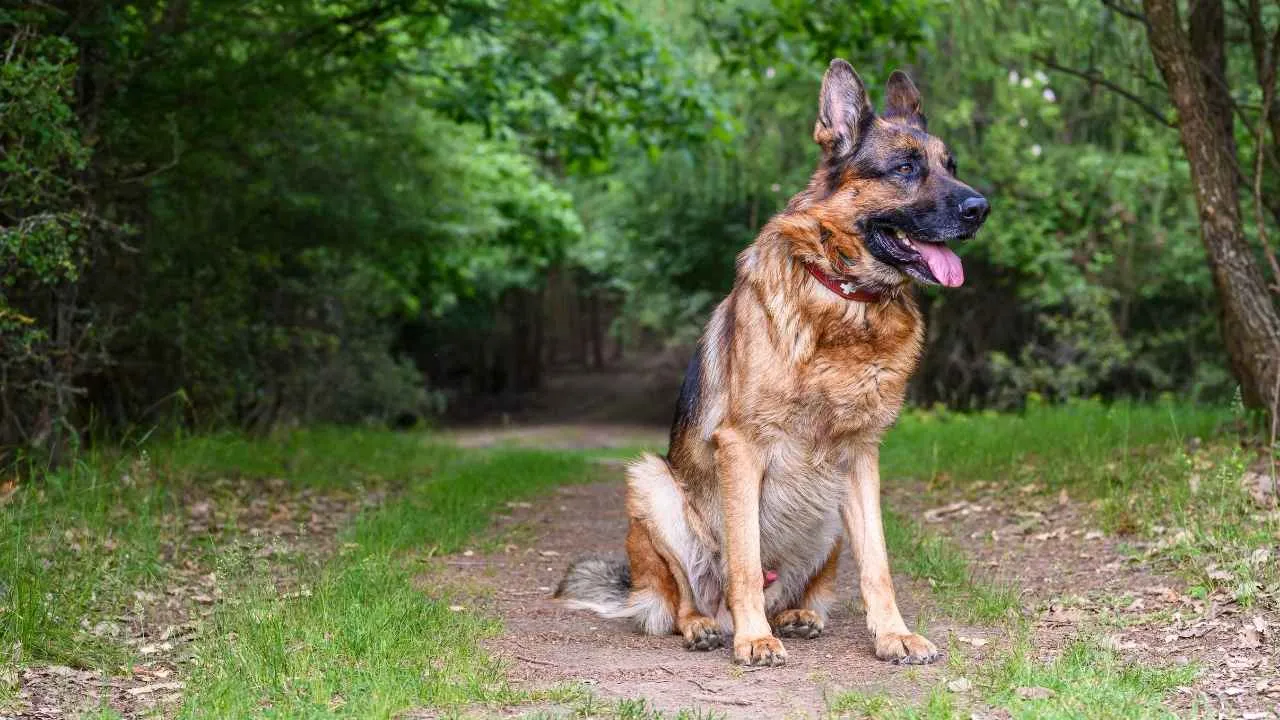
Also known as the Alsatian, the German Shepherd is one of the most versatile and admired working breeds in the world. Originally developed in Germany from herding and farm dogs, this intelligent, agile, and powerfully built breed stands between 22 and 26 inches tall and weighs 50 to 90 pounds.
German Shepherds are renowned for their double coat—a layer of coarse, straight fur and a thick coat on the outer side, soft undercoat, which offers resilience in various weather conditions, though caution is needed in extreme heat. This loyal, courageous dog continues to serve in various roles, including police and military.
With deep-rooted herding instincts, German Shepherds are driven to explore and stay active, making them exceptional companions for outdoor adventurers. Their moderate-to-high energy levels and love for mental stimulation mean they’re always ready for a new trail or challenge.
Unique Traits
German Shepherds are known for their unwavering loyalty, sharp intelligence, and exceptional trainability. These traits make them ideal for owners who lead dynamic, outdoor-oriented lives and value structured companionship. German Shepherds are a large, athletic breed that needs regular exercise to stay healthy and fit.
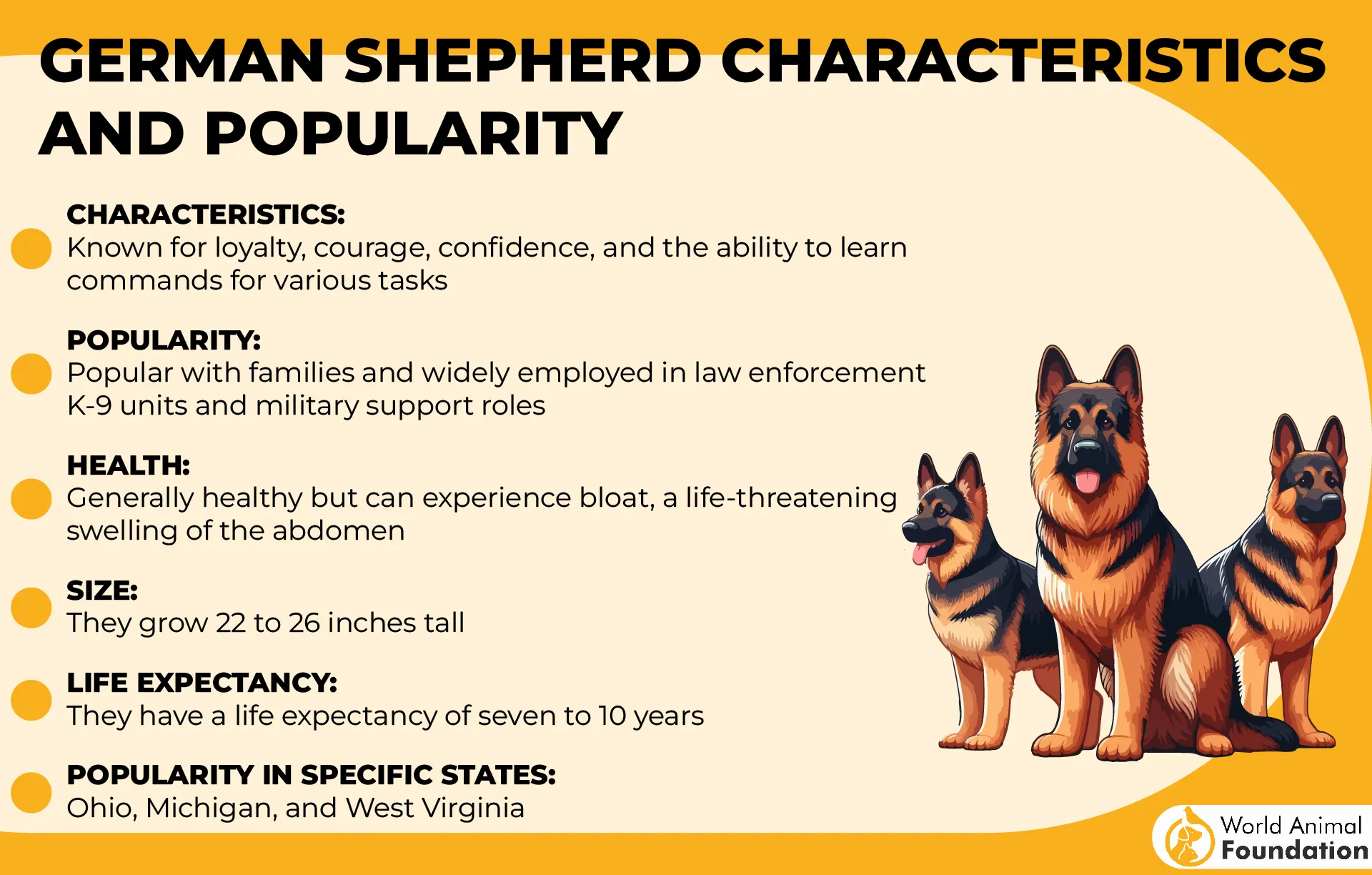
Fun Fact: In 1990, a German Shepherd named Orient guided his blind owner, Bill Irwin, across the entire Appalachian Trail.
2. Alaskan Malamute
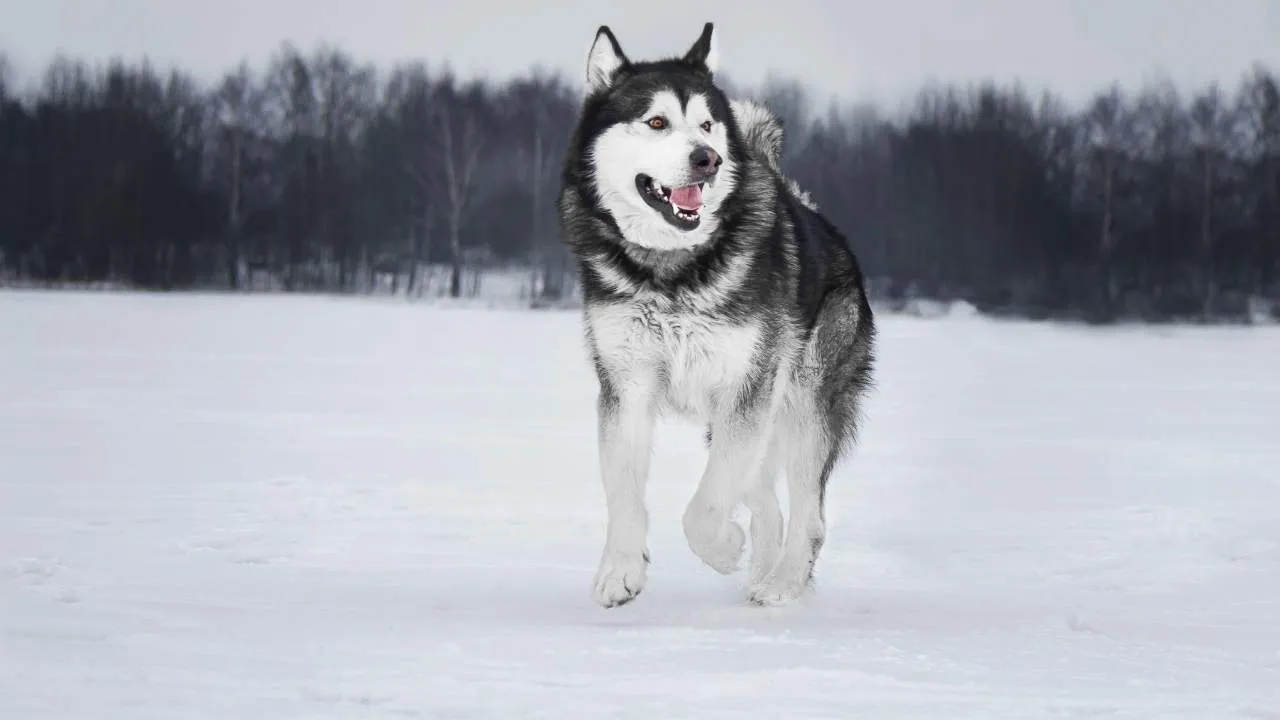
Known for their endurance and strength, the Alaskan Malamute—sometimes referred to simply as the “Mal”—is a true Arctic workhorse. Originally bred by the Mahlemut tribe of Alaska, these dogs were developed to pull heavy sleds over snowy terrain, and their robust build reflects that heritage.
Standing 23 to 25 inches tall and weighing between 75 to 85 pounds, they possess powerful shoulders, a deep chest, and a thick, weatherproof double coat that provides excellent protection against the cold.
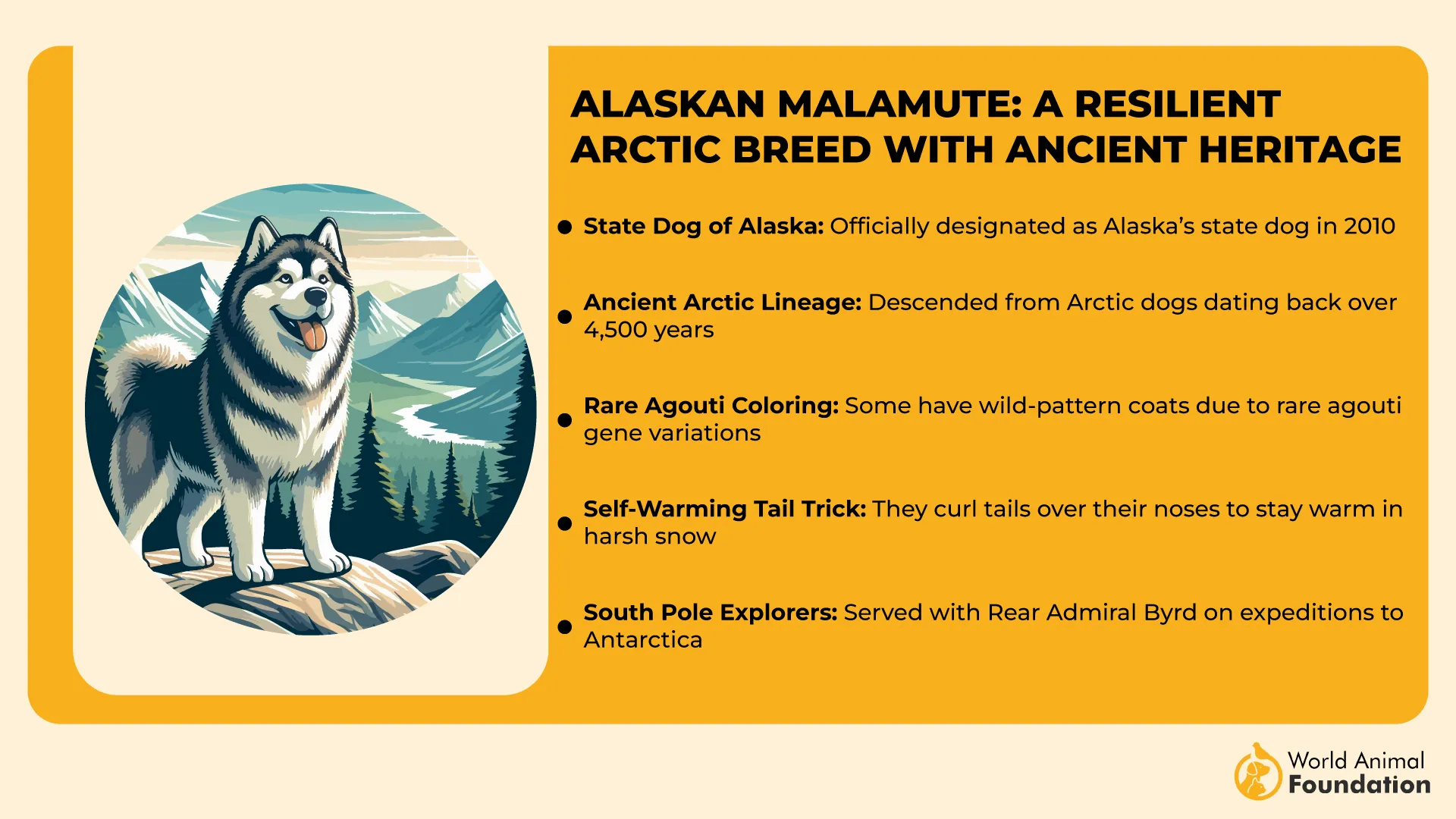
According to the AKC, the Alaskan Malamute is known for being loyal, fun-loving, and affectionate. Their expressive almond-shaped eyes and signature plume-like tail carried over the back make them both functional and majestic companions for wilderness adventures.
Unique Traits
Alaskan Malamutes are affectionate yet dignified pack animals who bond deeply with their families. They are intelligent and playful, but also independent, requiring firm and early training. Their strong prey drive means they may chase smaller animals, so off-leash freedom in parks should be used cautiously.
Malamutes need 1–2 hours of physical activity daily and shed heavily, especially during seasonal changes. Their resilience and loyalty shine in various environments, including challenging outdoor environments, making them ideal for rugged landscapes.
Fun Fact: Malamutes were once believed to guard against evil spirits and are known for their ability to haul weighty loads across frozen terrain with remarkable stamina.
3. Australian Shepherd
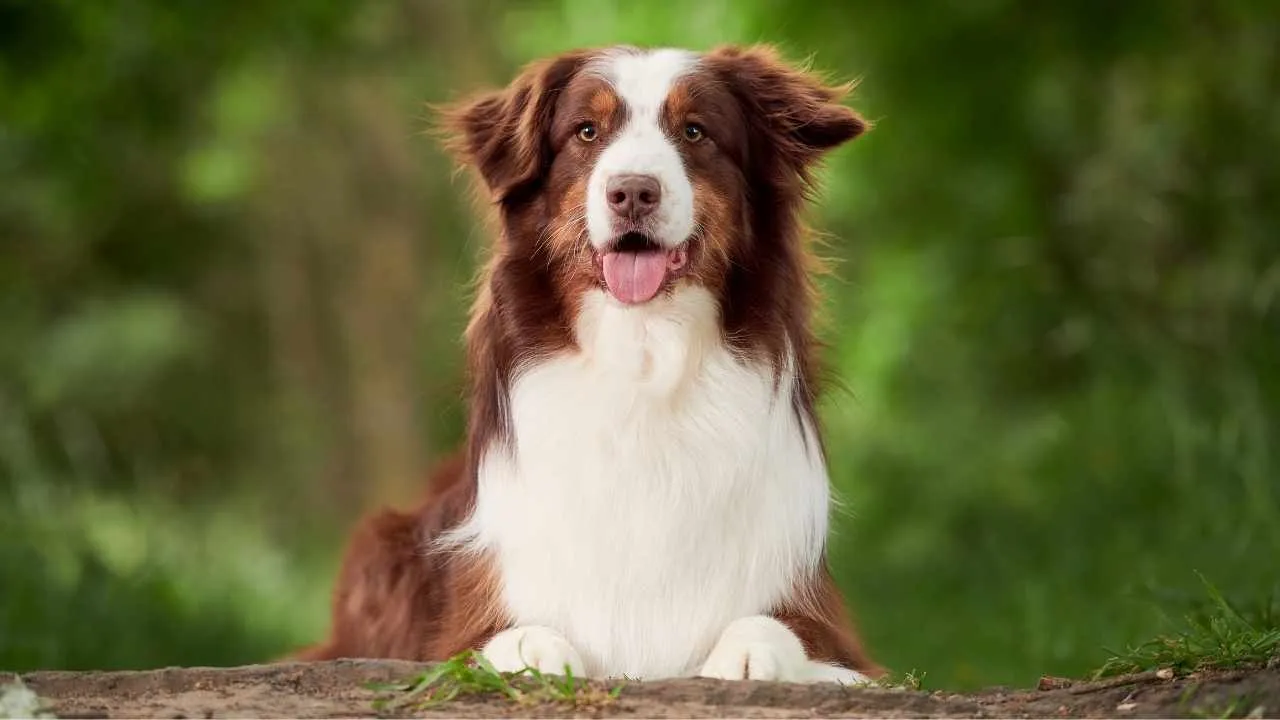
Despite its name, the Australian Shepherd—often affectionately called Aussie, California Shepherd, or Bob-Tail—originated in the western United States, especially California, in the late 1800s. Developed from European herding dogs, some of which arrived via Australia and others with Basque immigrants, this medium-sized breed was built for rugged terrain and outdoor life.
Weighing between 40 to 65 pounds and standing 18 to 23 inches tall, Aussies are lean, energetic, and have a striking coat that can include merle patterns, vivid tan points, and even eyes of two different colors.
With roots in ranching and rodeo life, Aussies have the stamina and drive to keep pace on long hikes and national park adventures. Their strong work ethic and love for movement make them the perfect trail companions for anyone who doesn’t sit still for long.
Unique Traits
Aussies are extremely intelligent, agile, and trainable. WebMD notes that Australian Shepherds form strong bonds with their owners and families and take their protective role very seriously.
They exhibit a strong herding instinct—often trying to round up birds, children, or other animals—and require ample physical and mental stimulation to avoid boredom. Their penetrating gaze and problem-solving skills make them excellent partners in demanding outdoor settings.
Fun Fact: The Australian Shepherd is a staple on the rodeo circuit and is considered the cowboy’s top pick for herding and agility.
4. Belgian Sheepdog
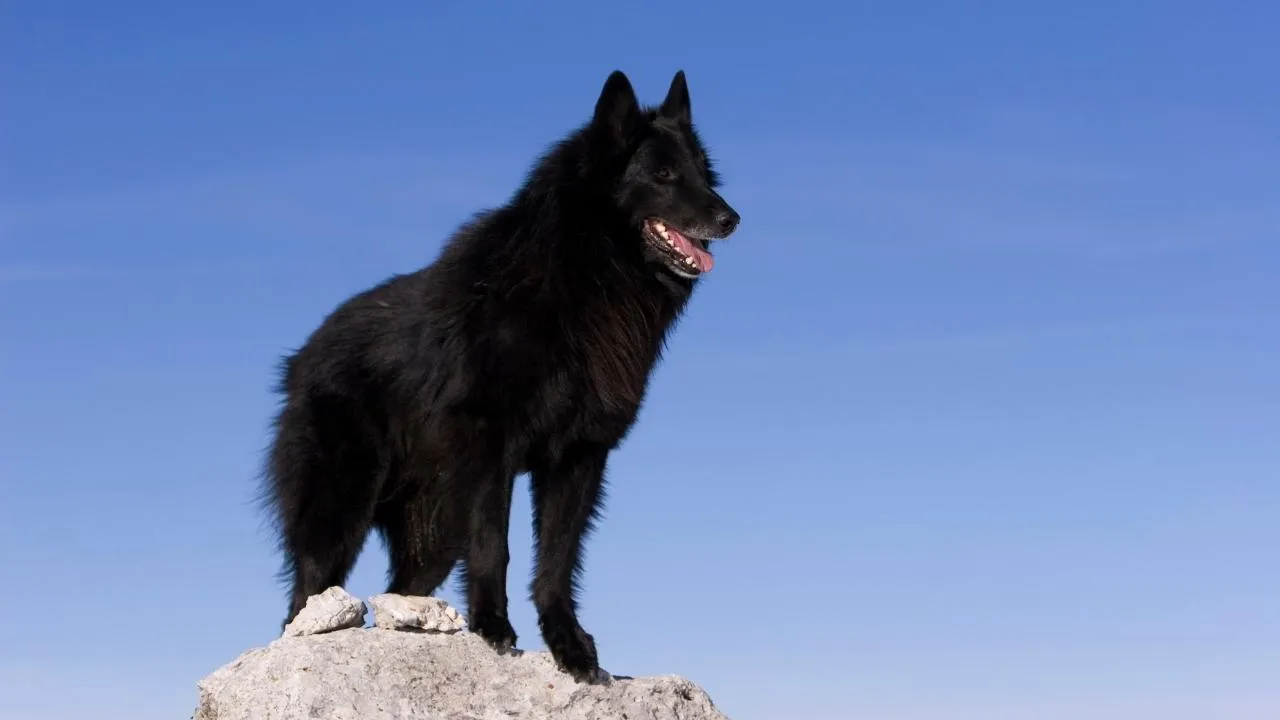
Also known as the Groenendael, the Belgian Sheepdog hails from the rugged countryside of Belgium and was bred in the late 1800s as a herding and working companion. This long-haired, black-coated dog stands out for its proud carriage, triangular ears, and alert, dark eyes that gleam with intelligence. Males can reach up to 26 inches in height and weigh between 60–75 pounds.
With a sleek silhouette and noble presence, the breed combines grace with stamina, making it a prime choice for extended hikes and challenging trails. Originally bred for herding cattle in varying terrains, this dog still thrives when given a job to do outdoors.
Its versatility has seen it serve as a military dog, guide dog, and loyal protector. The Belgian Sheepdog excels in cooler or warmer climates and easily adapts to life on the move, whether it’s tracking, hiking, or adventuring through the wild.
Unique Traits
Agile and obedient, the Belgian Sheepdog is exceptionally responsive to training. PetMD states that Belgian Sheepdogs are known for forming deep, lasting bonds with their human companions. Its strong tracking instincts and sharp nose make it ideal for outdoor rescue or detection tasks.
However, their prey drive means off-leash freedom requires solid recall training and safe boundaries.
Fun Fact: The breed’s European name, Groenendael, was inspired by the village where it was first developed by breeder Nicolas Rose.
5. Labrador Retriever
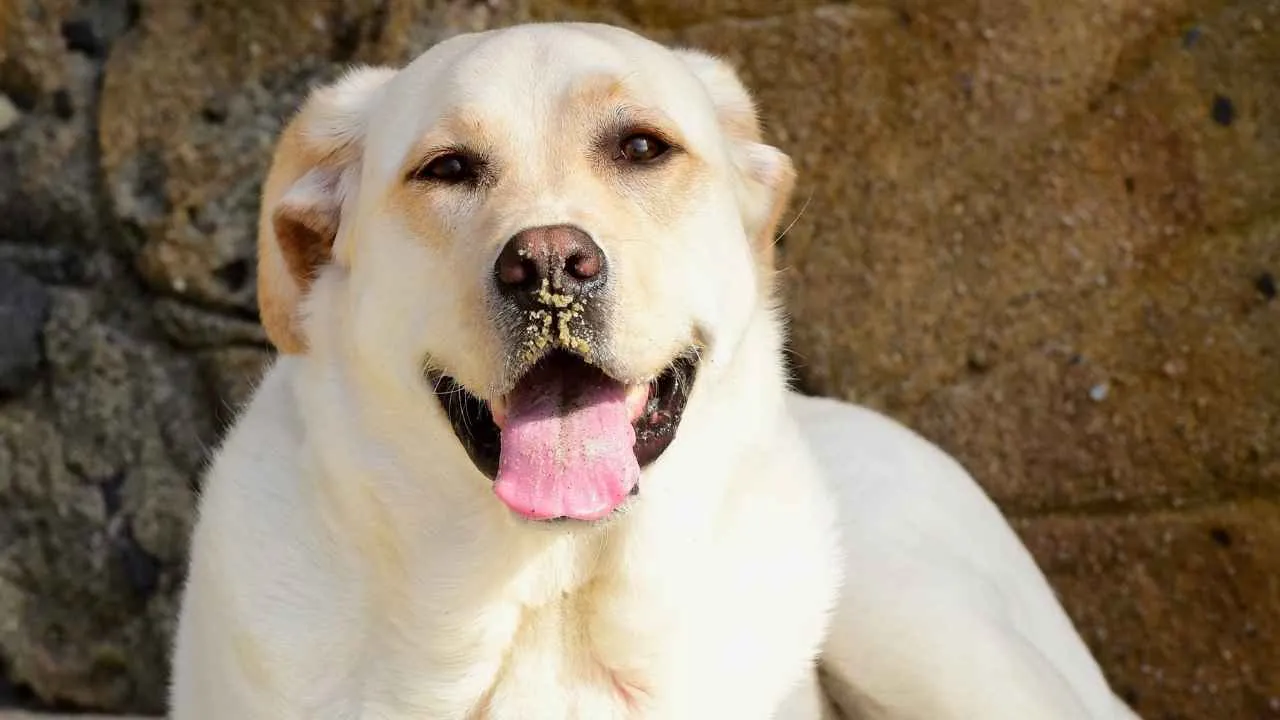
Affectionately known as the Lab, the Labrador Retriever is a beloved outdoor companion with roots tracing back to Newfoundland, where it assisted fishermen in retrieving nets and waterfowl. Introduced to England around the 1800s, this breed quickly earned a reputation as a stellar gun dog, excelling in field trials.
With a sturdy, well-balanced build, adult Labs stand between 21.5 to 24.5 inches tall and weigh 55 to 80 pounds. Their dense, water-resistant coat—available in black, yellow, or chocolate—and trademark “otter tail” make them excellent swimmers and trail companions.
Perfect for wide trails and water-bound adventures, Labradors thrive in national parks where they can run, swim, and explore freely. These high-spirited, affectionate dogs love being with their humans and need plenty of physical and mental stimulation.
Unique Traits
Labradors possess webbed paws and a rudder-like tail, enhancing their natural swimming ability. Their eagerness to please and boundless energy make them both adventurous and loyal. However, their curiosity can lead them astray, so a GPS tracker is a smart investment for off-leash outings.
Fun Fact: A service Lab named Endal once saved his owner’s life—and was named Dog of the Millennium for his heroic actions.
6. Siberian Husky
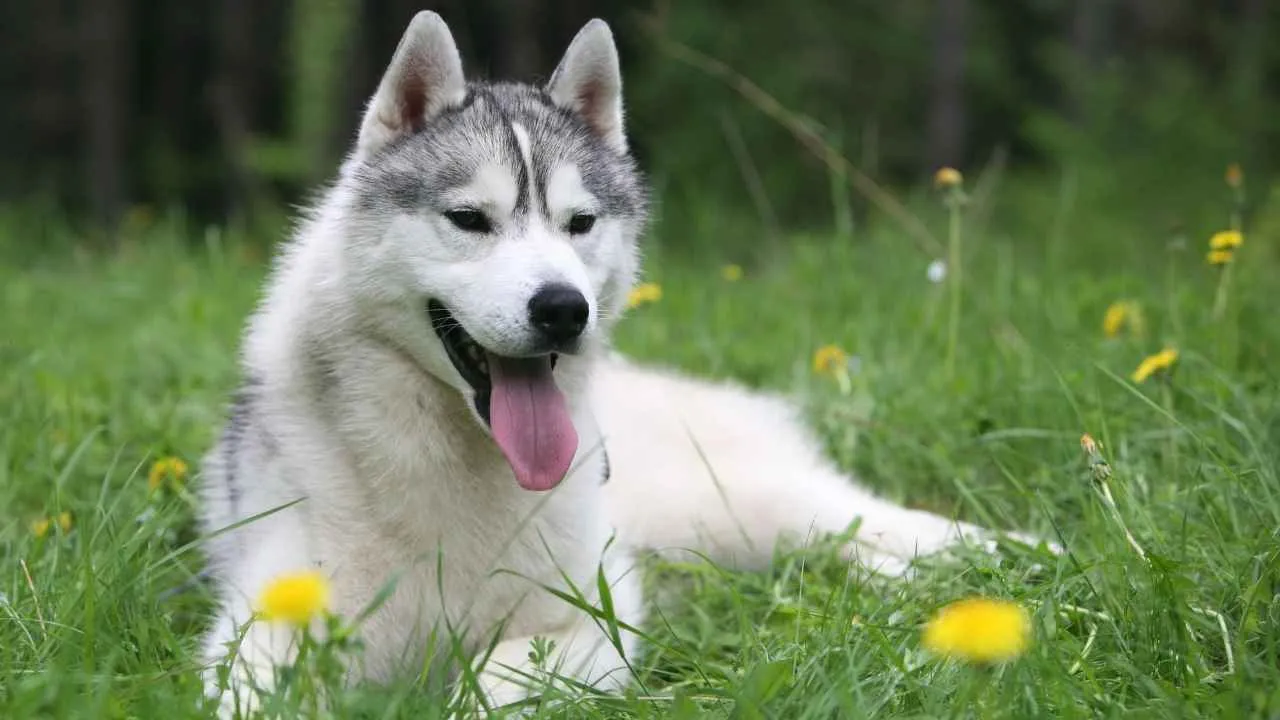
Also known as the Sibe or Chukchi dog, the Siberian Husky is a medium-sized working breed with roots tracing back to the Chukchi people of Siberia. Bred to haul sleds across long distances, this breed is a powerhouse of endurance, speed, and resilience—perfectly suited for life outdoors.
Weighing between 35–60 pounds and standing 20–24 inches tall, these athletic dogs are famed for their graceful stride and striking wolf-like appearance, often highlighted by distinctive head markings that resemble a superhero mask.
Huskies are valued not only for their stamina but also for their soft double coat, suited for chilly adventures in the wilderness. Despite their friendly nature, Huskies are fiercely independent and thrive when given freedom and space to explore. Their love for hiking, trail running, and cold-weather excursions makes them ideal companions for national park explorers and adventure seekers.
Unique Traits
Siberian Huskies are highly energetic, clever, and known for their knack for escaping enclosures with ease. They require consistent physical activity and mental stimulation to stay happy. Their stubborn streak requires patient, positive training, especially from an early age.
Fun Fact: The legendary Husky Balto led the final leg of the 1925 serum run to Nome, Alaska—an event now honored by the Iditarod race.
7. Border Collie
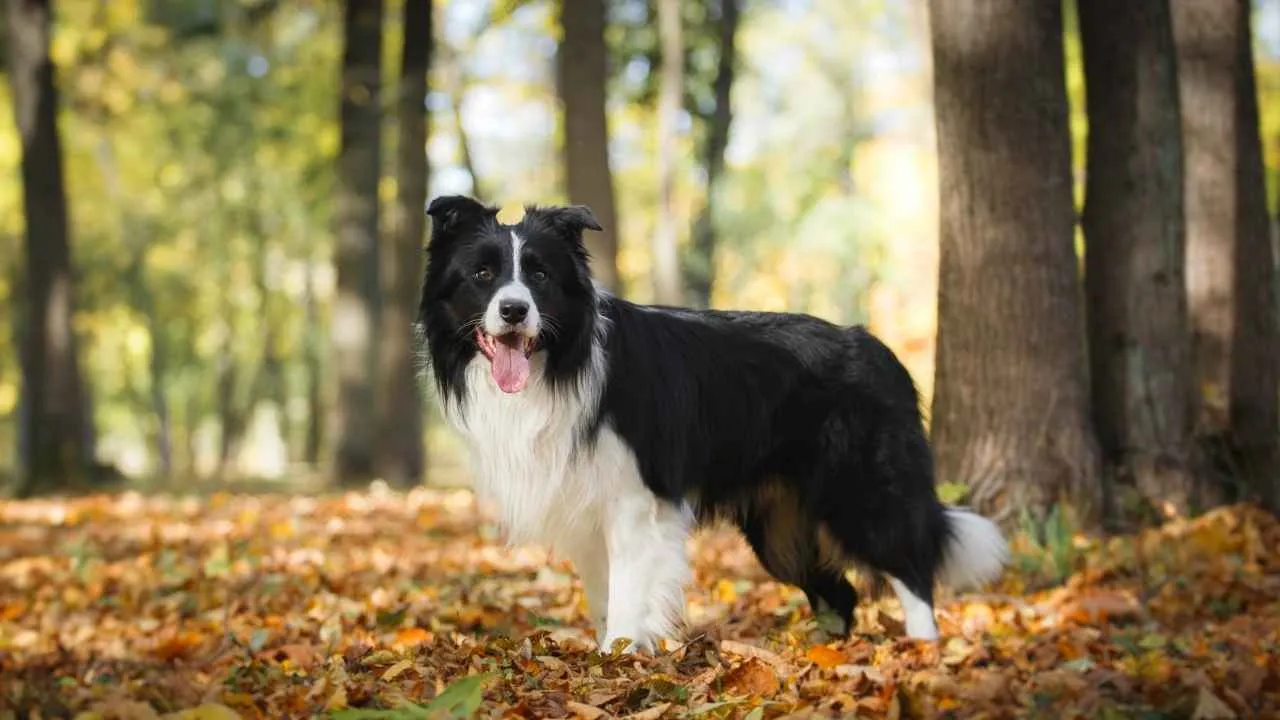
Few breeds embody outdoor enthusiasm like the Border Collie, also known as the Welsh Sheepdog, Highland Collie, or Scotch Collie. Originating along the border of Scotland and England, these agile herders were bred for brains, endurance, and speed.
Medium-sized and weighing between 30 to 55 pounds, they stand 18 to 22 inches tall and sport either a sleek, smooth coat or a rough, weather-resistant one, making them perfectly suited for unpredictable park climates. Bred from ancient Roman and Viking stock, this dog thrives with tasks, making them ideal for active pet parents who love hiking, exploring, or even camping off-grid.
Unique Traits
Border Collies are famously clever, with mental sharpness that outpaces most other breeds. They learn commands quickly, crave mental challenges, and excel at agility sports. They’re loyal, family-friendly, and often instinctively watchful over children.
With energy to burn and a constant need for stimulation, national parks provide the open space where they love to roam freely and work off energy. They bond best when given structure and a job to do—whether herding, hiking, or navigating woodland trails.
Fun Fact: A Border Collie named Chaser learned over 1,000 words, while another, Jumpy, set a world record for the fastest dog skateboarding 100 meters!
8. Bernese Mountain Dog
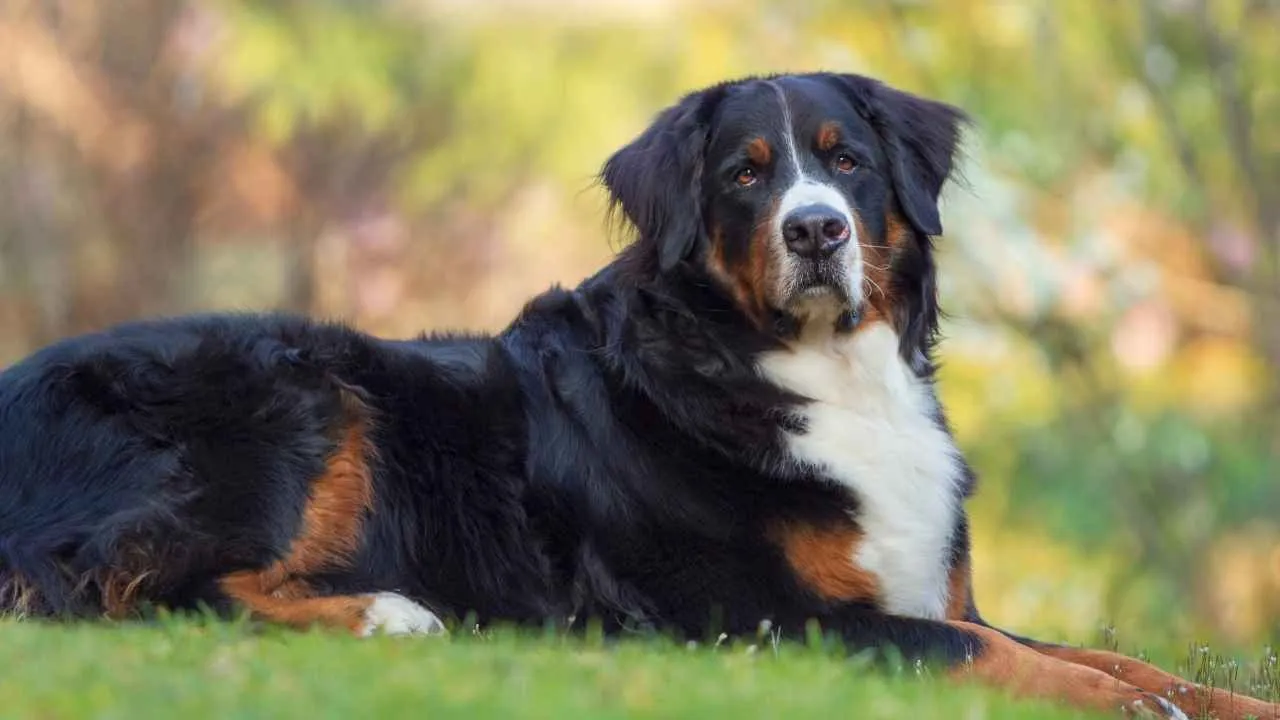
Also known as the Berner or Bernese, the Bernese Mountain Dog hails from the Swiss Alps, where it was once used for pulling carts and herding livestock. With its large frame—standing 23 to 27.5 inches tall and weighing 70 to 115 pounds—this breed is a robust working dog wrapped in a silky, tricolored coat.
Despite its strength and size, the Berner is a gentle giant with a soft, affectionate temperament. Originally bred for rugged outdoor labor, this dog feels right at home wandering alpine trails or strolling through scenic parks. Though not built for long endurance hikes, Berners are well-suited for moderate walks in cooler climates.
Their history of cart-pulling and farm work gives them a strong work ethic, and they’re known to enjoy carrying packs on hikes. Calm, responsive, and easy to train, these dogs thrive best off-leash in quiet, natural spaces.
Unique Traits
The Berner’s broad chest, expressive eyes, and silky coat are matched by a deep emotional sensitivity. They are loyal, often humorous in behavior—known to repeat actions that make their humans laugh—and they respond enthusiastically to joy and laughter. While they require space and grooming, their loving nature makes them ideal companions for nature-loving families.
Fun Fact: Berners are celebrated for acts of heroism, including rescues from both house fires and ocean currents.
9. Portuguese Water Dog
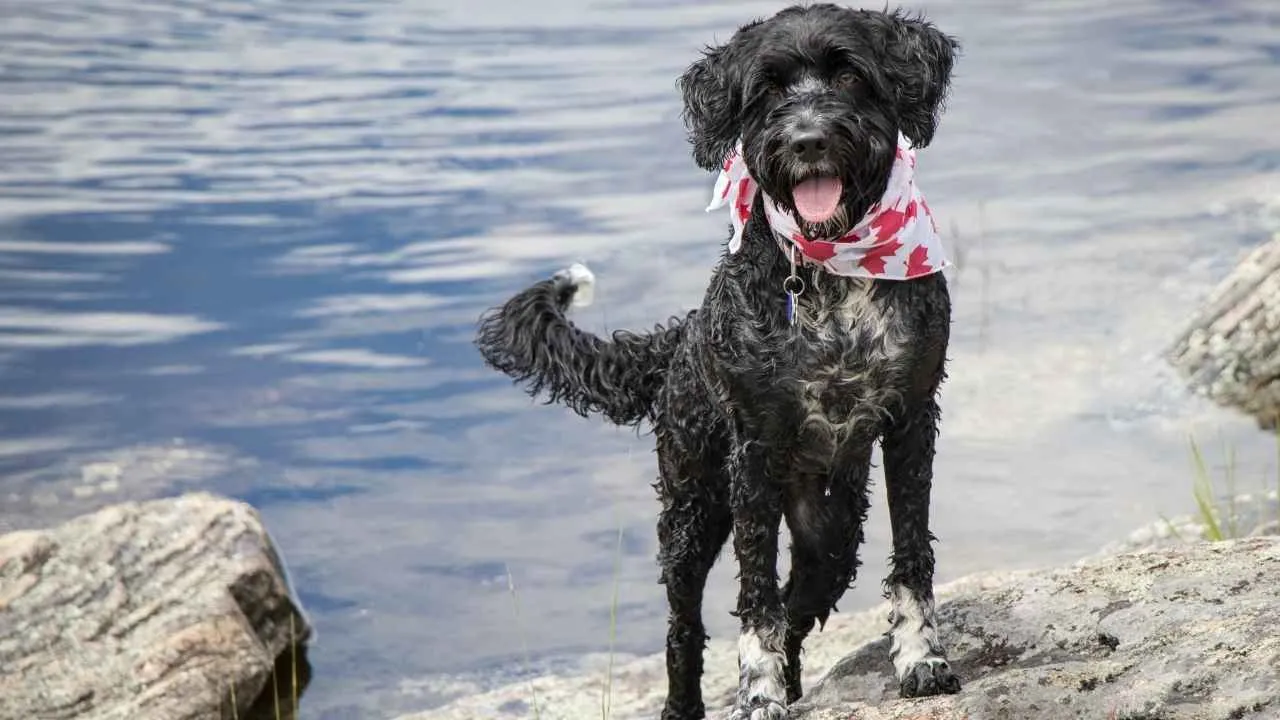
Also known as the Cão de Água Português, the Portuguese Water Dog hails from Portugal’s Algarve coast, where it once served as a tireless assistant to local fishermen. With a height ranging from 16 to 22 inches and a weight between 35 to 55 pounds, this medium-sized dog is sturdy, athletic, and built for aquatic adventures.
Historically used to herd fish into nets, retrieve lost gear, and deliver messages between ships, the breed’s water affinity is legendary—even their toes are webbed for expert swimming. Their thick, low-shedding curls make them hypoallergenic and suited for varied climates, a major plus for active outdoor families.
Unique Traits
Portuguese Water Dogs are not just intelligent—they’re biddable, eager to please, and highly trainable. Their energetic, playful nature pairs well with a protective and loyal temperament. Adaptable to new environments and happiest when given tasks, they thrive with people who lead active lives and offer both structure and affection.
Fun Fact: President Obama’s dog, Bo, was a Portuguese Water Dog—gifted by Senator Ted Kennedy, who adored the breed and even wrote a children’s book about his own pup, Splash.
Conclusion
Exploring the great outdoors with your canine companion can be one of life’s greatest joys, especially in vast, majestic places like Grand Canyon National Park. Some breeds, like the Portuguese Water Dog, were practically made for such environments, thriving in tasks involving endurance, agility, and even historical hunting instincts. While breeds serve various roles, from retrieving to herding, they all share a love for movement, nature, and bonding with their humans under open skies.
Whether you’re hiking during summer, prepping food at your campsite, or taking shelter under the trees, choosing the right breed makes all the difference. A Cocker Spaniel, for example, can be a joyful trail partner, while dogs from a shelter might surprise you with their adaptability and love for adventure. In the wild, instinct and survival go paw-in-paw, and in my opinion, the right dog isn’t just a companion, it’s the guy who turns a simple trip into an unforgettable experience, regardless of the competition on the trail.


